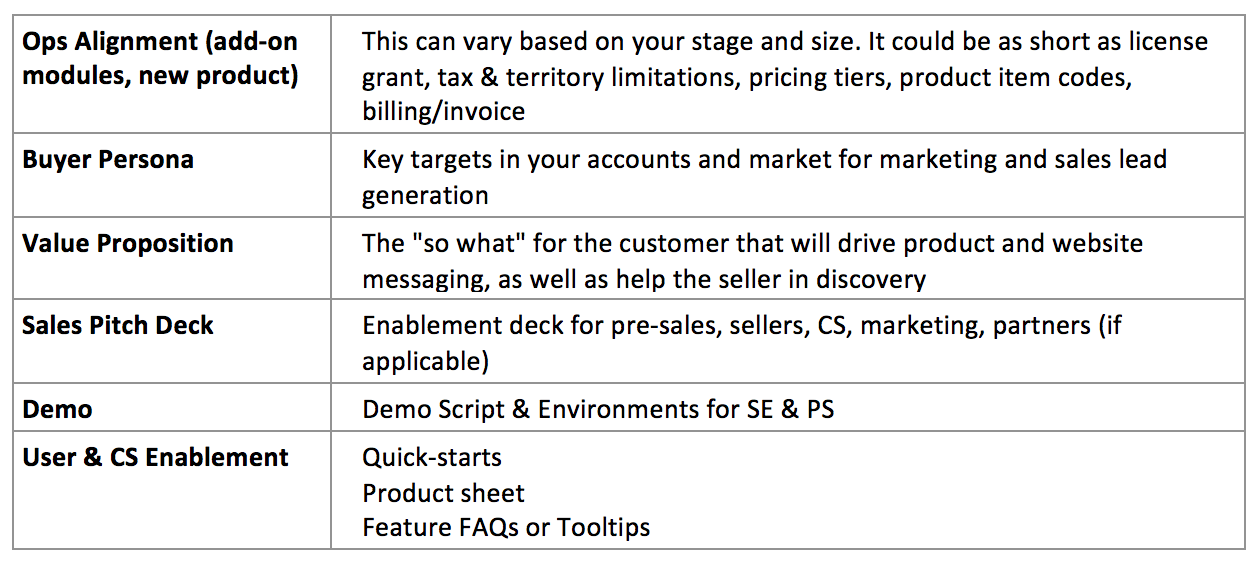
How to Make Your Product Release Go-To-Market Ready

A meeting between a sales team and a product executive started with the question, “What makes a product successful in the market: better technology or better sales?” The product executive answered, “I have to admit that it's sales.” The sales executive didn't say a word but just smiled and nodded. Although cross-functional banter is a normal (and frequent) occurrence, we all know that there is a balance. We need sales and marketing to build demand and win over new customers, but to accelerate adoption and grow customer revenue, we need good technology, market-fit positioning, and exceptional servicing.
So, how do we ensure a good balance in our commercialization model for ensured growth?
Although most memorable examples of product “fails” have been in the consumer market, enterprise software and SaaS companies are not immune to oversight. It is not uncommon to observe SaaS companies launch something without sales and/or marketing being informed. Commercialization is the discipline of preparing the organization for a product feature, upgrade, or new product launch to optimize demand and adoption in the market. But in addition to a comprehensive “launch checklist,” the commercialization process must be customer-focused and agile. By aligning & prioritizing deliverables from the customer’s perspective (as opposed to your operations’), your team is focused on preparing the product launch to communicate the product’s value proposition in the modes that are most accessible and meaningful to the customer.

Step 1. Know Your Customer and Buyer
Our Insight team often asks portfolio executives if they have defined their ideal customer profile (ICP) and buyer personas. Defining your ICP and/or buyer persona is the cornerstone for understanding who your customer is, what business problems they are trying to solve, and what motivates them to turn to your solution. Because of the broad nature of SaaS usage, the term “customer” could mean:
- User – primary user of the product who will tout how great your product and the user experience are
- Buyer – the person whose business problem is solved by team members using your product; how the value that your product delivers helps the buyer address their KPIs and/or how the value impacts the company’s bottom line
- User-buyer – user of your product who has purchasing power and can purchase additional modules of your product through in-app purchasing or inquiry through your product
- Stakeholder – a person whose business problem is tangentially impacted by the happiness of the user and/or buyer
Being familiar with your product’s value proposition and the differentiation to each buyer type is key to knowing what is important to them in their journey of buying or using your product.
Step 2. Align Your Commercialization Value Chain to the Buyer Journey
By aligning your commercialization plan to the buyer journey, you can identify what a buyer would need at each step of the process. The buyer journey alignment also allows the commercialization team to identify key stakeholders who support the buyer and request their input and feedback when developing the needed content and buying parameters.

As with any product lifecycle, there are major and minor launches and releases. Categorizing what high, medium, and low levels of commercialization are will help for ongoing release/launch planning. Last, being agile in the launch process incorporates prioritizing the most important deliverables to address time-to-market considerations.

Step 3. Keep Your Commercialization Plan Agile
Like the agile process, the commercialization plan can take an iterative approach. The beauty of SaaS is that you can test, launch & improve capabilities for immediate customer use and feedback. Is there proper user enablement with a new feature? If not, prioritize user enablement documentation and CS training. Is the feature allowing more value for the user (such as increased productivity)? If so, circulate that value to marketing and sales.
Because many Insight companies are hyper-growth, keeping the commercialization plan agile provides time-to-market advantages with “good enough” commercial deliverables. As the saying goes, “let perfect not become the enemy of good.

Although commercialization plans can be comprehensive, you might benefit from a focused checklist of the critical few within the first phase of the launch. Below are a few "must-haves" for go-to-market readiness for immediate traction. With time and maturity, you can prioritize additional value deliverables that will support the buyer journey.

Take-Away
Getting a new product or capability adopted in the market takes cross-functional accountability and contribution. To make the commercialization process successful, empower a program manager and a cross-functional working team to create and orchestrate a plan that is aligned with the buyer journey with early release deliverables to promote agility. Making a “good enough” plan that is aligned with the buyer journey is a best practice regardless of the company’s maturity.









